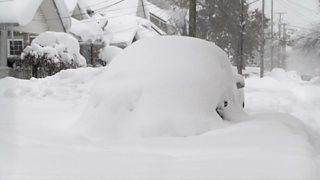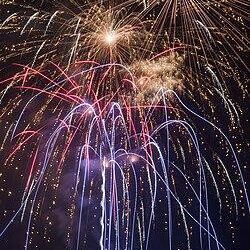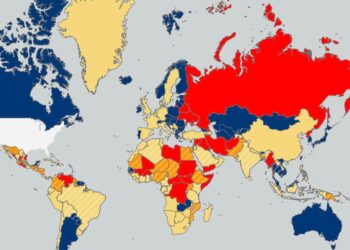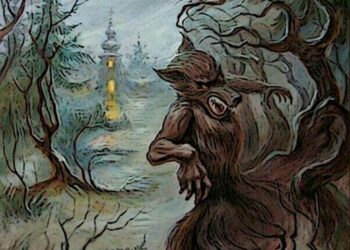Latvia ushers in the traditional midsummer festivities as communities across the country come together to celebrate J─ü┼ći, a centuries-old holiday marking the summer solstice. Heralded by bonfires, folk songs, and the weaving of flower crowns, this vibrant celebration honors Latvian heritage and nature’s peak. As daylight lingers late into the night, locals and visitors alike partake in rituals believed to bring health, fertility, and prosperity for the coming year. This year’s J─ü┼ći festivities, featured in LSM’s coverage, highlight the enduring cultural significance of Latvia’s most beloved national holiday.
Latvia Embraces Traditional J─ü┼ći Festivities with Songs and Bonfires
Communities across Latvia gathered as night fell to honor the age-old tradition of J─ü┼ći, a festival steeped in folklore and seasonal celebration. The air was filled with melodies as groups of revelers sang l─źgo songs-ancient chants believed to bring fertility and protect against evil spirits. Throughout parks, fields, and village squares, bonfires blazed brightly, symbolizing the sun at its peak and uniting celebrants in warmth and light. Participants often adorned themselves with wreaths made of oak leaves or wildflowers, a vivid tribute to nature’s bounty during the summer solstice.
The festivities followed a familiar pattern, highlighting several enduring customs:
- Song and dance: Singers performed traditional songs that have been passed down for generations, fostering a strong sense of community and cultural identity.
- Bonfire jumping: A ritual where jumping over the flames is believed to cleanse and ensure good luck for the coming year.
- Feasting: Tables laden with rye bread, cheese, and freshly picked berries provided sustenance for the celebrants.
- Herbal wreath making: Crafting headpieces enriched with fragrant herbs, thought to ward off evil spirits and illnesses.
| Custom | Meaning |
|---|---|
| Bonfire | Sun’s power and protection |
| Singing l─źgo | Calling fertility and health |
| Oak leaf wreaths | Strength and endurance |
| Jumping over fire | Purification and good fortune |
Exploring the Cultural Significance of J─ü┼ći in Latvian Heritage
J─ü┼ći, celebrated annually on the night of June 23rd, is one of the most cherished Latvian traditions, marking the summer solstice with profound cultural resonance. Rooted in ancient pagan rituals, the festivities celebrate nature’s peak and the power of the sun, believed to be at its strongest. Central to the observance are the lighting of bonfires, singing traditional folk songs, and weaving intricate wreaths from oak leaves and flowers. These activities symbolize renewal, fertility, and protection against evil spirits. Beyond the revelry, J─ü┼ći reflects a deep connection to Latvian identity, exposing the intertwining of nature spirituality and communal solidarity that has endured through centuries of social and political change.
The customs of J─ü┼ći are rich with symbolism and communal participation. Below is a brief overview of some key elements that highlight the event’s cultural depth:
- Bonfires: Symbolizing the sun, they are lit to ensure good health and prosperity for the coming year.
- Folk Songs: Known as “dainas,” these traditional melodies connect participants to ancestral wisdom and storytelling.
- Floral Crowns: Crafted from oak leaves and wildflowers, they represent strength and vitality.
- Midnight Midsummer Rituals: Activities like searching for the mythical fern flower are believed to grant luck and happiness.
| Symbol | Meaning | Tradition |
|---|---|---|
| Bonfire | Sun’s Power & Protection | Lighting and dancing around fires |
| Oak Leaves | Strength & Fertility | Wreath making and wearing |
| Fern Flower | Luck & Hidden Knowledge | Midnight search in the forest |
| Daina Songs | Heritage & Wisdom | Singing and sharing folklore |
Tips for Experiencing J─ü┼ći Celebrations Like a Local in Latvia
To truly immerse yourself in the spirit of J─ü┼ći, embrace the local customs that fill the Latvian countryside with magic after Midsummer’s night. Start by preparing a traditional flower wreath, typically made from lush oak leaves for men and vibrant wildflowers for women – a symbol of fertility and protection. As night falls, join communal singing of folk songs known as *dainas*, featuring melodies passed down through generations. Don’t miss the bonfire ritual: leaping over the glowing flames is believed to bring luck and ward off evil spirits, so gather with locals who cherish this ancient tradition as much as you will.
When it comes to the festive menu, savor classic Latvian fare that fuels the celebrations. Share hearty rye bread, fresh goat cheese, and tangy curd cheese mixed with wild herbs. Complement your meal with freshly picked cranberries or lingonberries, and wash it down with locally brewed J─ü┼ću alus (beer) or sweet homemade fruit mead. For a quick reference, here’s a simple guide to must-have foods during the festival:
| Dish | Description |
|---|---|
| J─ü┼ću siers | Homemade cheese infused with caraway seeds |
| Rye bread | Dense, dark bread symbolic of Latvian heritage |
| Herbal teas | Made from locally picked plants to refresh and calm |
Key Takeaways
As Latvia wraps up its vibrant J─ü┼ći celebrations, communities across the country continue to honor this cherished Midsummer tradition with song, dance, and the timeless rituals that connect them to their cultural heritage. The festivities not only mark the peak of summer but also reaffirm a sense of national identity, drawing locals and visitors alike into a shared experience rooted deeply in Latvian history. As the echoes of hymns and the glow of bonfires fade, the spirit of J─ü┼ći endures, promising to illuminate Latvian hearts year after year.















